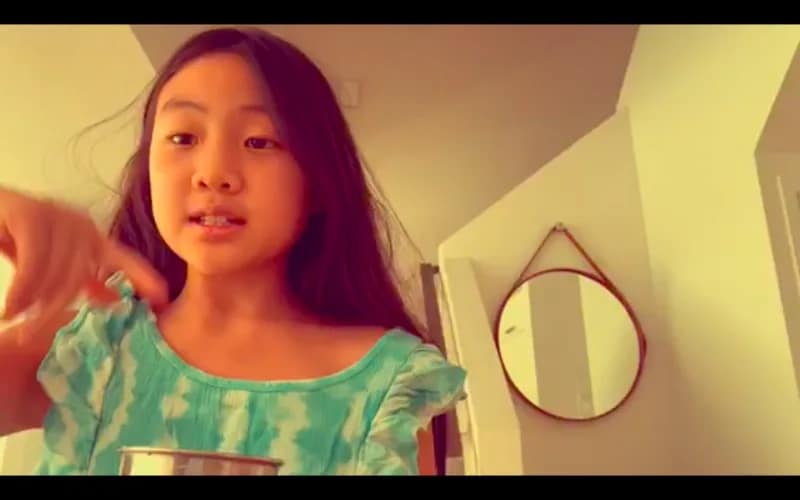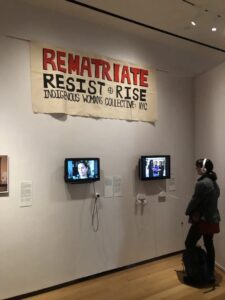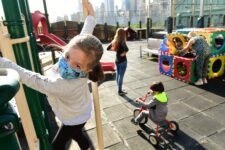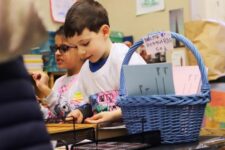“This is the urinary system that I made,” Mia S. ’27 says in her video, gesturing at the carefully labeled contraption next to her. “These are the kidneys, which are cups with coffee filters inside,” she continues, “and there’s a hole poked through them that leads to the ureters, which are straws, that lead into the bladder, which is this piping bag. The piping tip is the urethra.” Mia then pours a cup of cucumber water into the “kidneys,” which filter out the pieces of cucumber but allow the liquid to pass through. At the end, when the “bladder” is nearly full, she removes a cork blocking the piping tip. The water rushes out into a waiting tray — urination, done.
Mia’s video demonstration is one of many creative projects 5th Graders at Ethical Culture turned in for their study of the urinary system. After they independently researched the various organs and processes, students were tasked to come up with a way to demonstrate what they had learned. Some chose to flex their writing chops, translating what they had learned for a general audience, while others sent in photos of innovative models using materials like paper cutouts and Legos. But for Mia, the chance to film herself working with her creation was hard to pass up. “I thought it would be more fun,” she says.
Like Mia, Madisen K. ’27 chose to document the activity in a video because it was entertaining — and because it allowed her to enlist a helping hand. “I asked my sister to join me because then I could pretend that I was actually in the classroom doing it with one of my friends,” she explains. In her video, Madison adds salt to water to represent the inorganic salts that are present in urine, while her sister adds lemon juice to replicate its color. Together, they narrate the flow of urine as it traces its path from kidney to urethra.
The urinary system project has highlighted the ability of video to serve as both an outlet for creativity and an opportunity for interpersonal connection. Leading up to the urinary system, Jen Erdman, Science Teacher, recorded herself interacting with her DIY model of the digestive system, complete with lemon juice to represent gastric acid and dryer sheets to represent the small and large intestines. Not only did a video presentation allow Erdman to introduce and reinforce scientific concepts — like the degradation of food in the stomach or the absorption of nutrients in the small intestine — but it also gave her the chance to show off the personality that her students know and love. Inspired by her example, Mia, Madisen, and several of their classmates created their own videos.
While all students at ECFS learn to be critical problem-solvers and effective communicators, in some ways, the shift to remote learning has prompted them to engage even more proactively with these skills. Erdman’s project, for example, encouraged students to be resourceful and use materials available at home to construct highly individualized models of the urinary system. It also encouraged them to find a way to convey their learning in a way that was accessible and relatable — even when they were physically apart.
The project has highlighted the ability of video to serve as both an outlet for creativity and an opportunity for interpersonal connection.
“I felt like what they did was more creative than what they would have done in school,” says Erdman. “They had to really think about what they were going to use, and they were given more options of how to present their notes.” The project has been so successful that Erdman hopes to replicate it with her 4th Graders.
As ECFS continues to be responsive to the needs and learning styles of students, video has allowed both students and teachers to create learning experiences that are at once authentic and immersive. To see familiar faces work with their hands, crack jokes, and offer warmth and support — whether as pre-recorded segments or in real time — has made remote learning feel much more human.
“Video is kind of like seeing someone in person,” says Madisen. “When my teachers have videos of them explaining things, I feel like they’re there.”



